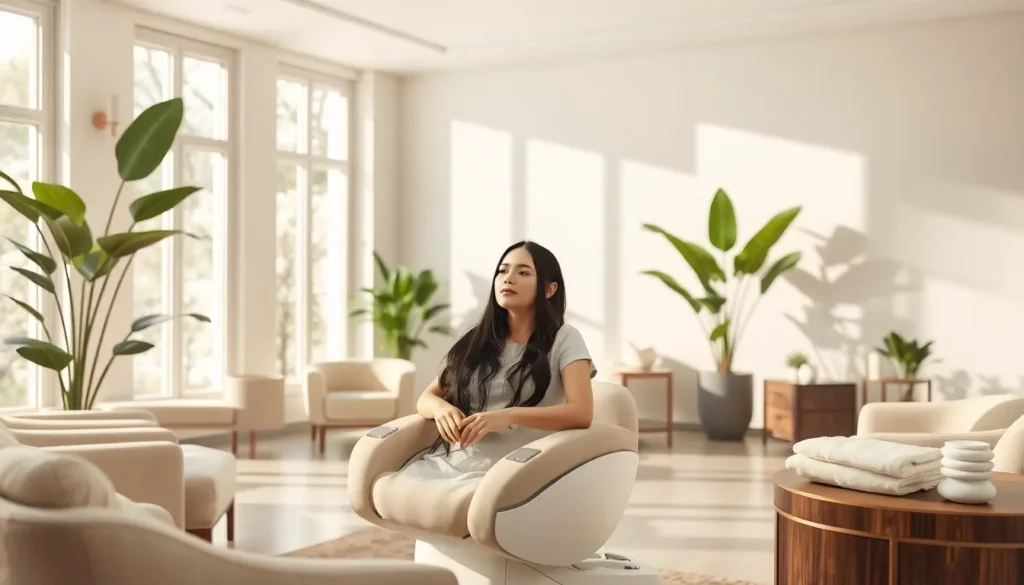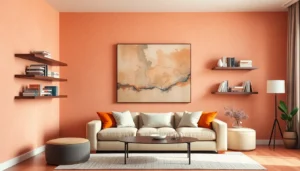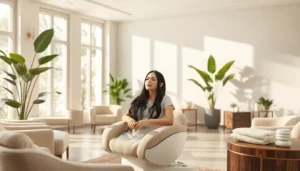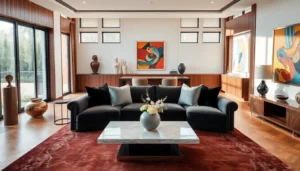Imagine stepping into a med spa that feels less like a clinical office and more like a luxurious retreat. The right interior design can transform a sterile space into a sanctuary of relaxation and rejuvenation. With the right touches, clients won’t just leave feeling great—they’ll rave about the ambiance that made their experience unforgettable.
Table of Contents
ToggleUnderstanding Med Spa Interior Design
Interior design plays a crucial role in establishing the ambiance of a med spa. Creating a luxurious atmosphere requires careful selection of colors, materials, and layouts. Soft, neutral tones often evoke tranquility. Additionally, the strategic use of lighting enhances this calming effect while promoting a welcoming environment.
Choosing furnishings impacts both aesthetics and comfort. Ergonomic seating supports clients during their visit and encourages relaxation. Incorporating natural elements like plants or water features can further promote serenity. Such additions not only soothe the senses but also align with a holistic approach to wellness.
The layout of the space must facilitate easy navigation. Open floor plans enhance accessibility and promote smooth client flow. Treatment areas should maintain privacy while providing an intimate experience. Ensuring that each section is well-defined helps in minimizing distractions and enhancing focus on client needs.
Art and decor contribute significantly to the overall atmosphere. Thoughtfully selected artworks can spark positive emotions and engagement. Custom pieces tailored to the spa’s theme enhance brand identity. Utilizing local artists supports community engagement while adding unique charm to the space.
Technology integration improves functionality and client experience. Implementing smart systems for lighting or music allows for customization based on client preferences. High-quality equipment in treatment rooms can elevate service offerings and demonstrate professionalism.
Ultimately, a well-designed med spa interior reflects the brand’s mission and values. Attention to details creates a cohesive experience where clients feel pampered and rejuvenated. Design choices influence client perceptions, ultimately driving satisfaction and loyalty. The right environment transforms a visit into a memorable experience, encouraging clients to return and recommend the spa to others.
Key Elements of Med Spa Design
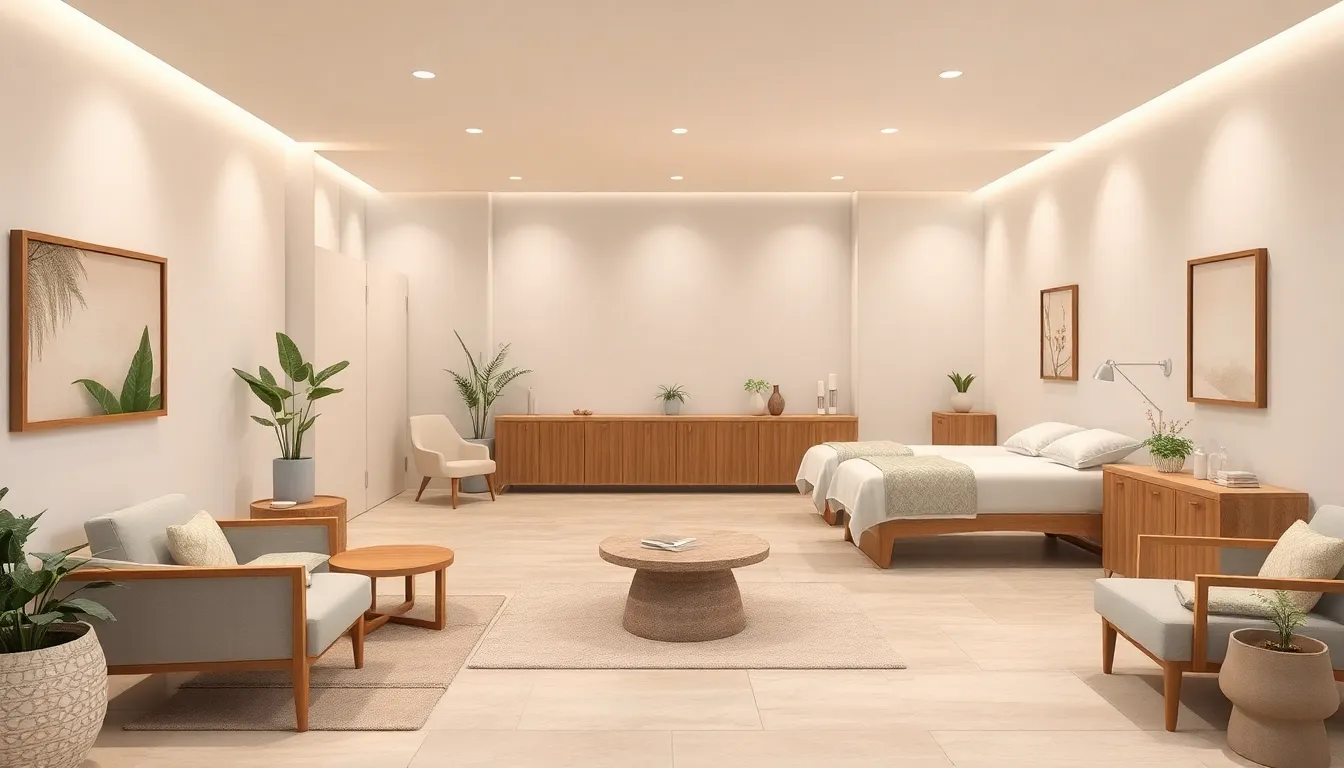
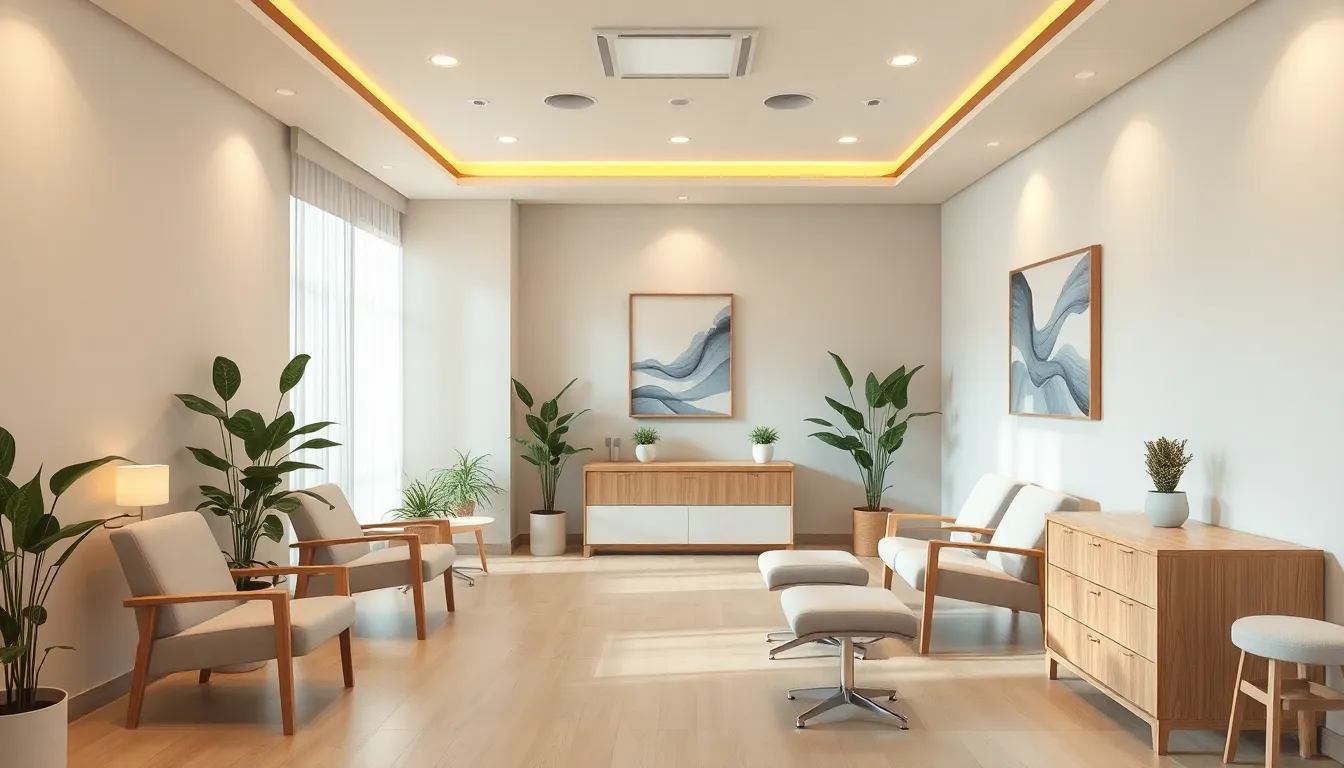
Effective med spa design focuses on creating a serene environment that encourages relaxation and rejuvenation. The careful selection of elements like color, furniture, and decor enhances the overall client experience.
Color Schemes
Selecting a color scheme is crucial for establishing a calming atmosphere. Soft, neutral tones like beige, gray, and pale blue evoke tranquility. They create a welcoming environment that aids relaxation. Accent colors can also be incorporated to stimulate positive emotions. Earthy greens and gentle pastels complement the primary palette, maintaining a sense of harmony. Optimal color choices promote visual interest without overwhelming clients. Designers often recommend testing colors in natural light, ensuring they project the desired ambiance throughout the day.
Furniture Selection
Choosing the right furniture enhances comfort and promotes relaxation. Ergonomic seating options provide support during waits and treatments. Comfortable treatment tables are essential for client satisfaction. Consideration of layout ensures seamless flow within the space, avoiding congestion. Each piece should reflect the spa’s brand identity while being functional. Natural materials such as wood and stone add warmth, fostering a connection to nature. Selecting multi-functional furniture can also optimize space usage, enhancing client experiences. Prioritizing quality and aesthetics guarantees that the environment remains inviting and professional.
Creating a Relaxing Atmosphere
Creating a relaxing atmosphere is essential for a med spa’s success. Various elements work together to make clients feel at ease.
Lighting Design
Lighting design plays a crucial role in enhancing the tranquility of a med spa. Soft, diffused lighting minimizes harsh shadows and creates a warm ambiance. Incorporating adjustable fixtures allows staff to tailor the light intensity based on the time of day or specific treatments. Natural light is invaluable, so consider large windows or skylights to connect clients with the outside world. Additionally, using layered lighting, such as ambient and task lighting, can highlight key areas while maintaining a serene overall environment.
Aromatherapy and Scents
Aromatherapy and scents significantly influence client comfort and relaxation. Essential oils like lavender and eucalyptus promote calmness and rejuvenation. Incorporating scent diffusers or candles can create an inviting atmosphere that lingers in the air. Carefully selecting scents can also enhance specific treatments, making the experience more immersive. Consider using subtle, pleasant fragrances to avoid overwhelming clients, allowing them to enjoy a truly relaxing experience. Creating signature scents can even reinforce brand identity, further enhancing overall satisfaction.
Maximizing Space and Functionality
Maximizing space in a med spa enhances both its functionality and client experience. The layout should prioritize seamless movement, ensuring treatment areas are easily accessible without compromising privacy. Implementing a logical flow between reception, waiting areas, and treatment rooms fosters a welcoming atmosphere.
Layout Considerations
Designing the layout requires careful thought. Treatment rooms should be spacious enough for equipment and personnel. Reception areas must accommodate clients comfortably while waiting. Positioning rooms for specific services—such as skin treatments and massage—near one another can improve workflow efficiency. Creating private nooks for consultation ensures confidentiality during client discussions.
Multi-Functional Areas
Creating multi-functional areas adds versatility to the space. A combined waiting and refreshment area can offer a tranquil retreat while keeping clients comfortable. This space might include seating arranged for conversation or individual reflection. Integrating treatment rooms that can serve multiple purposes, such as aesthetic procedures and wellness therapies, maximizes the use of square footage while maintaining a cohesive design.
